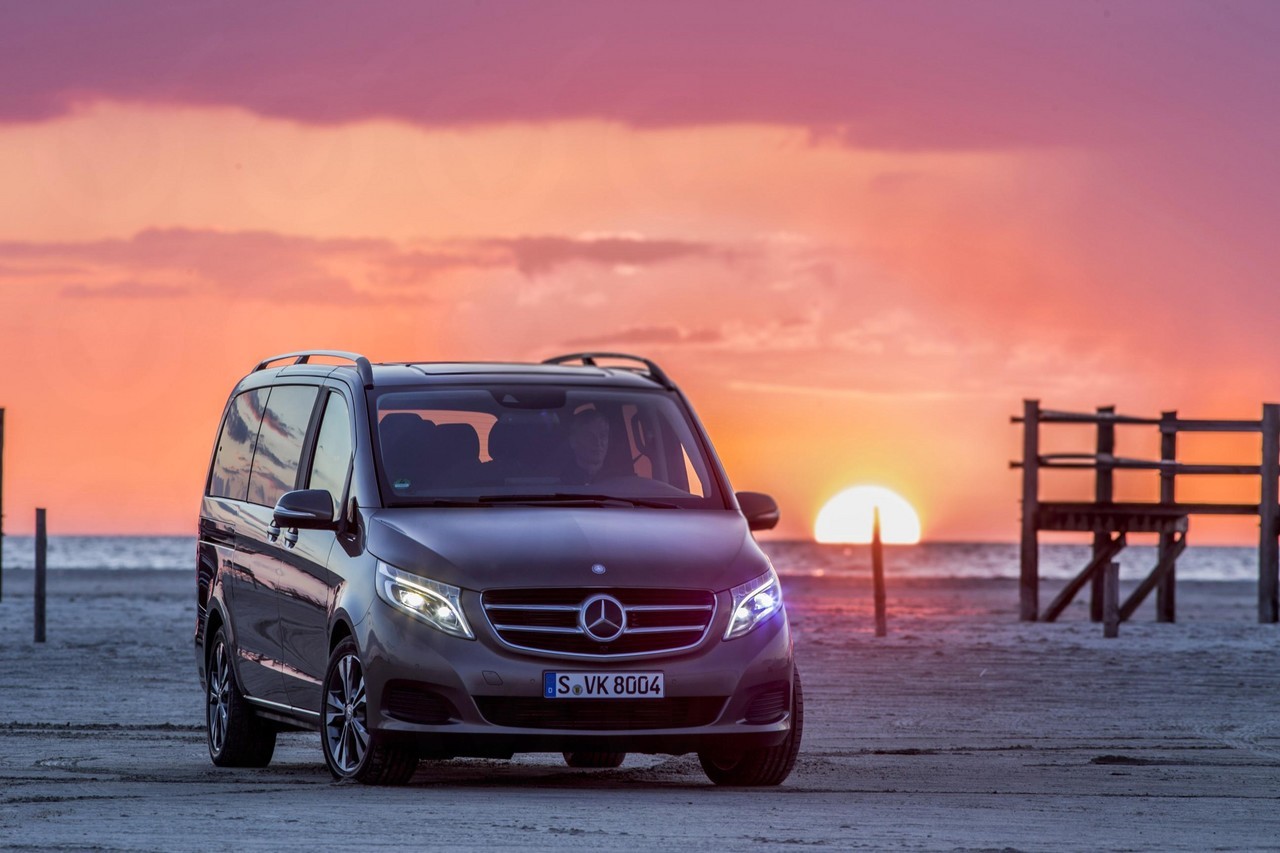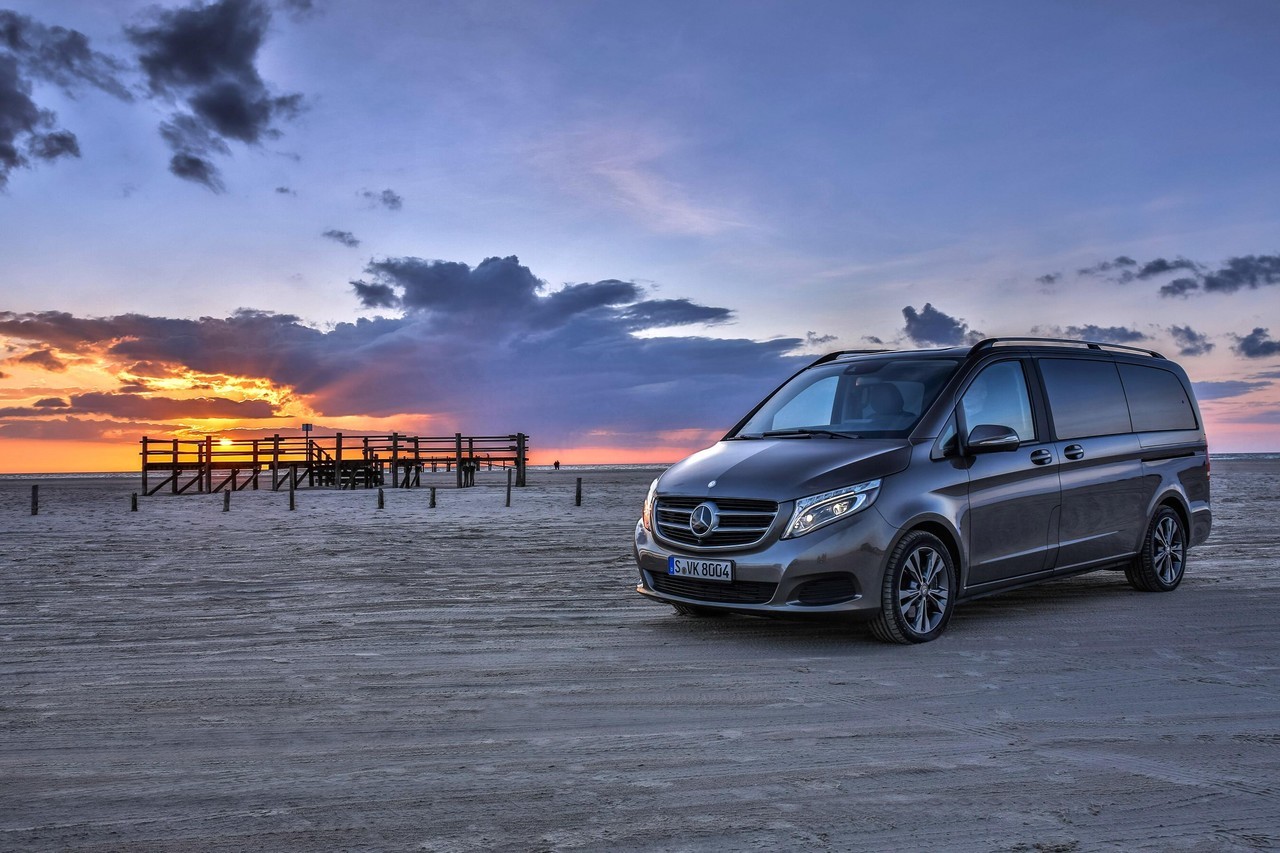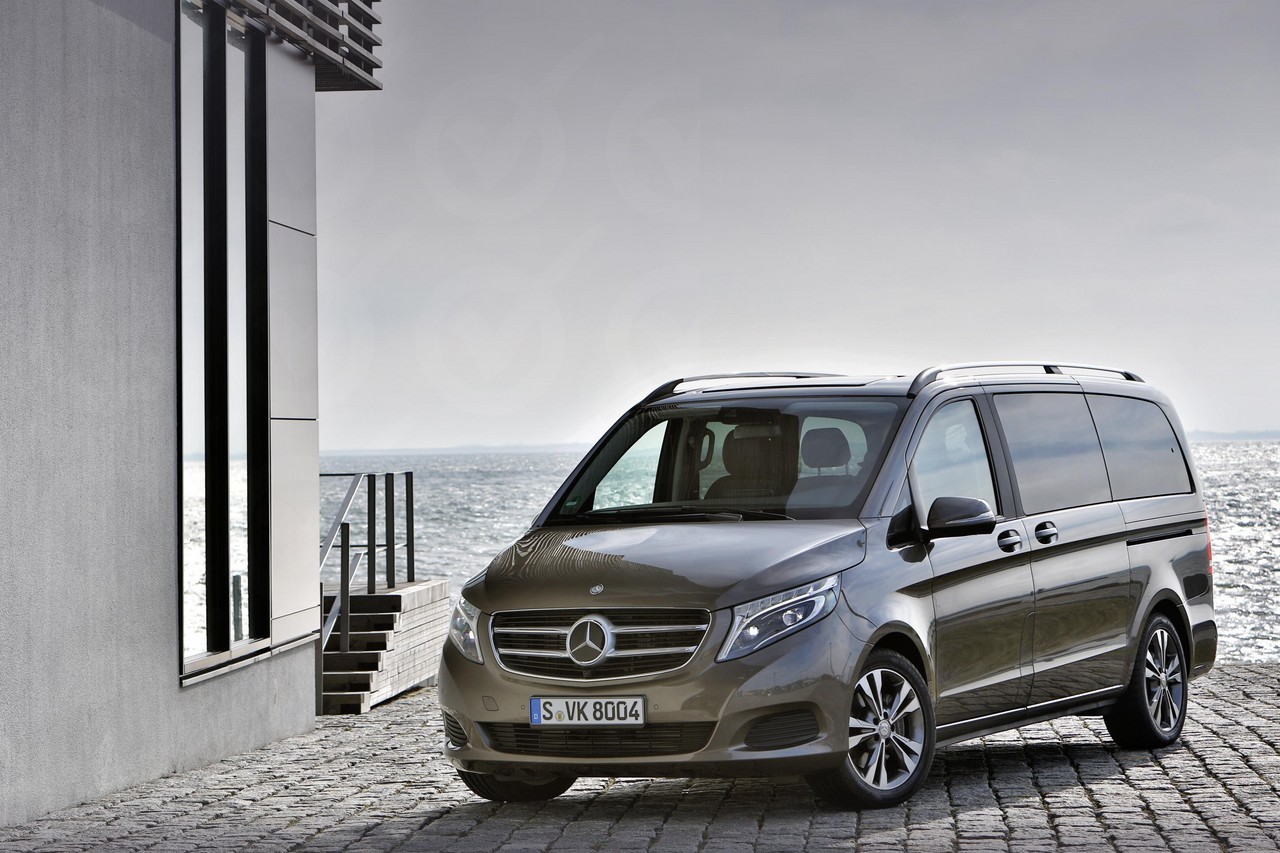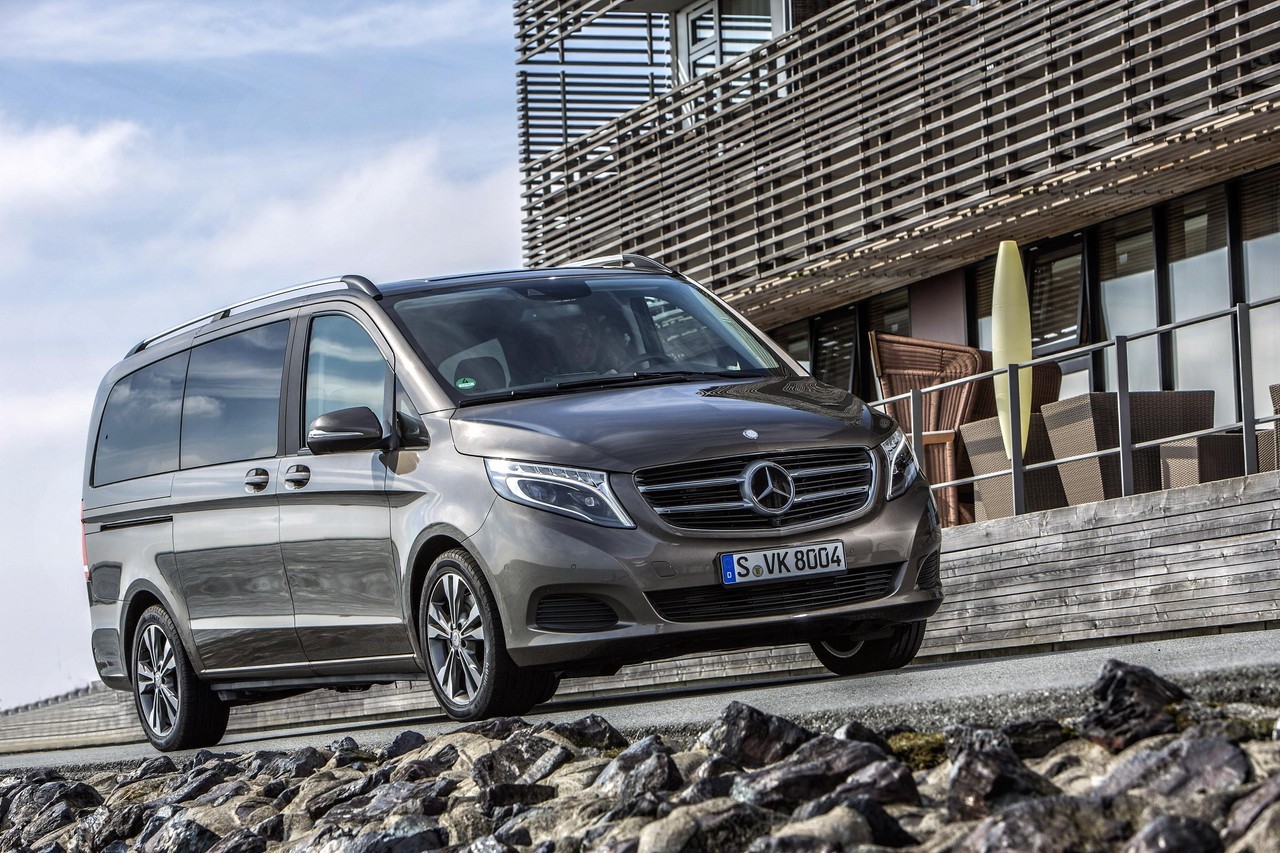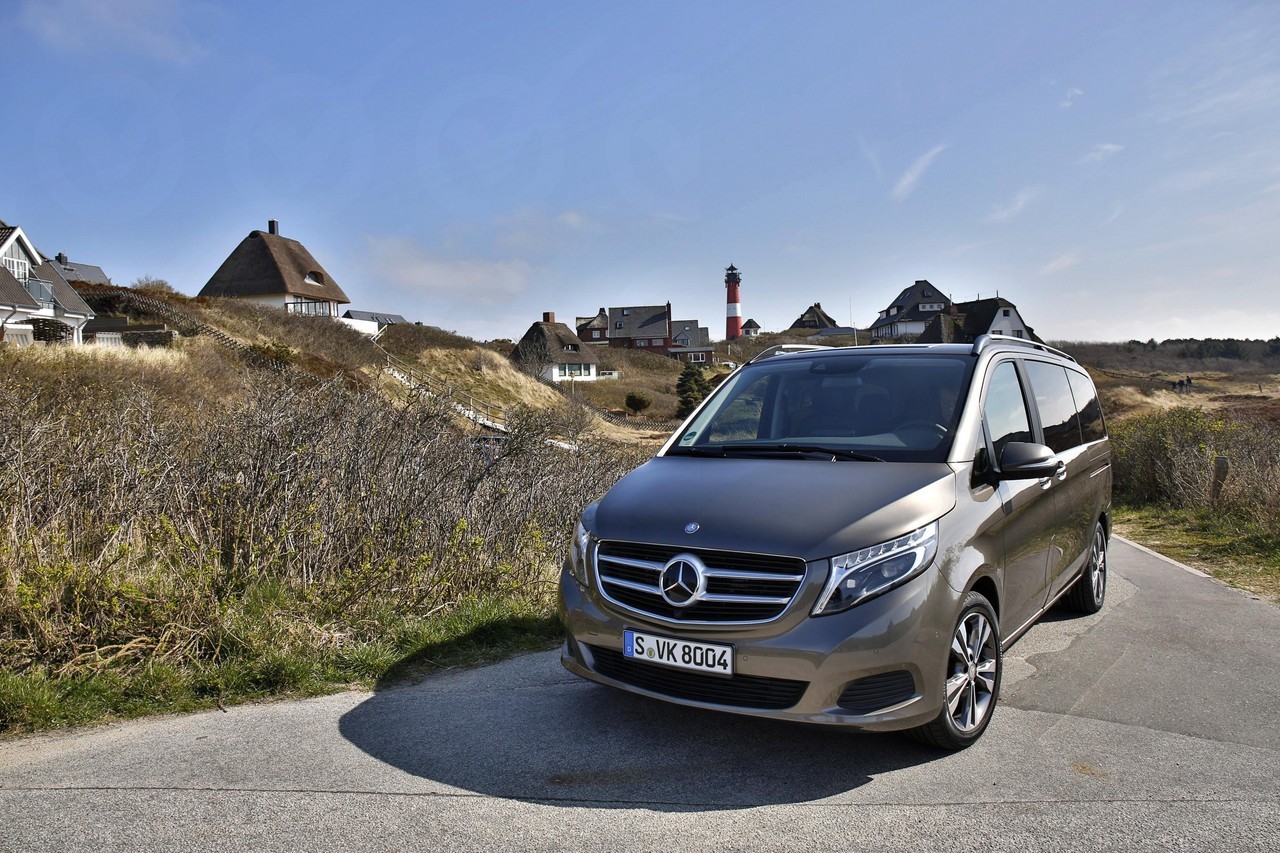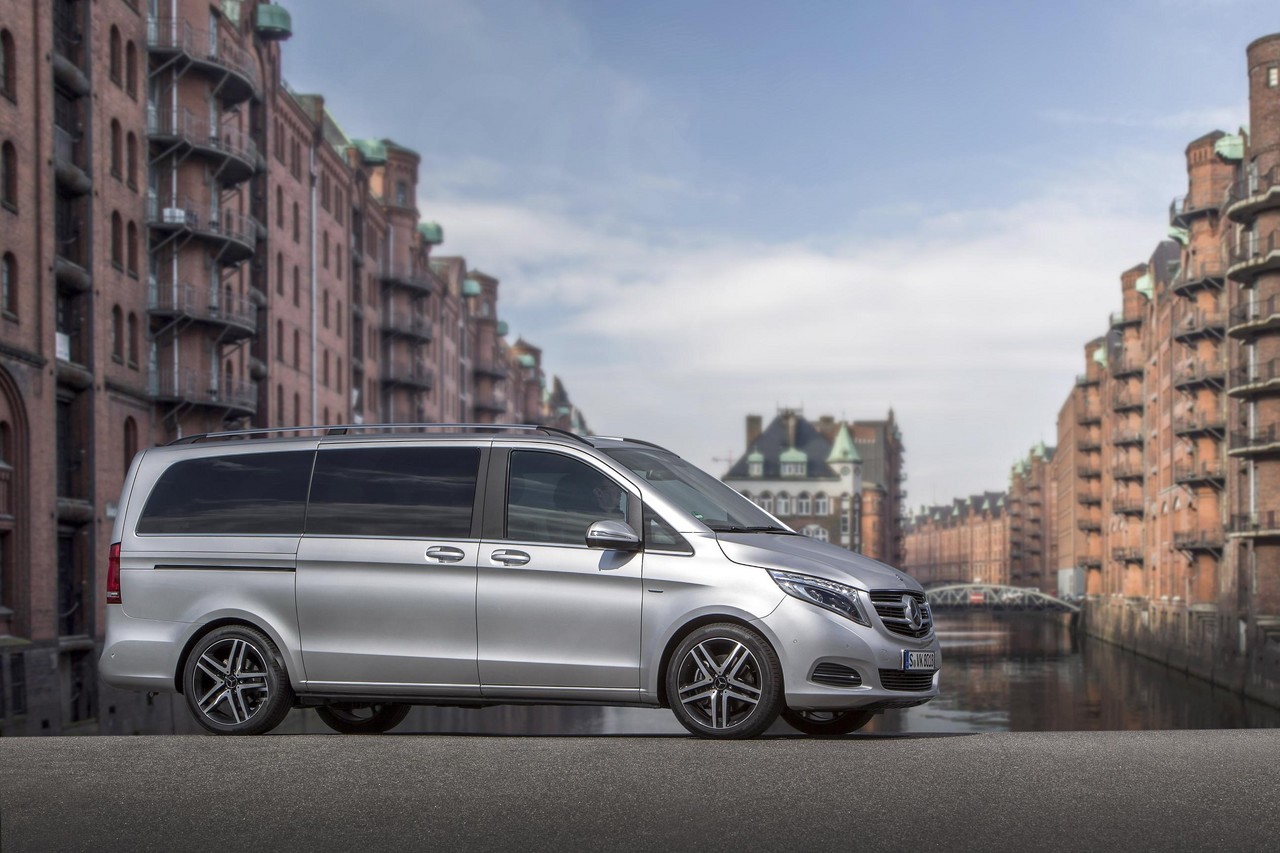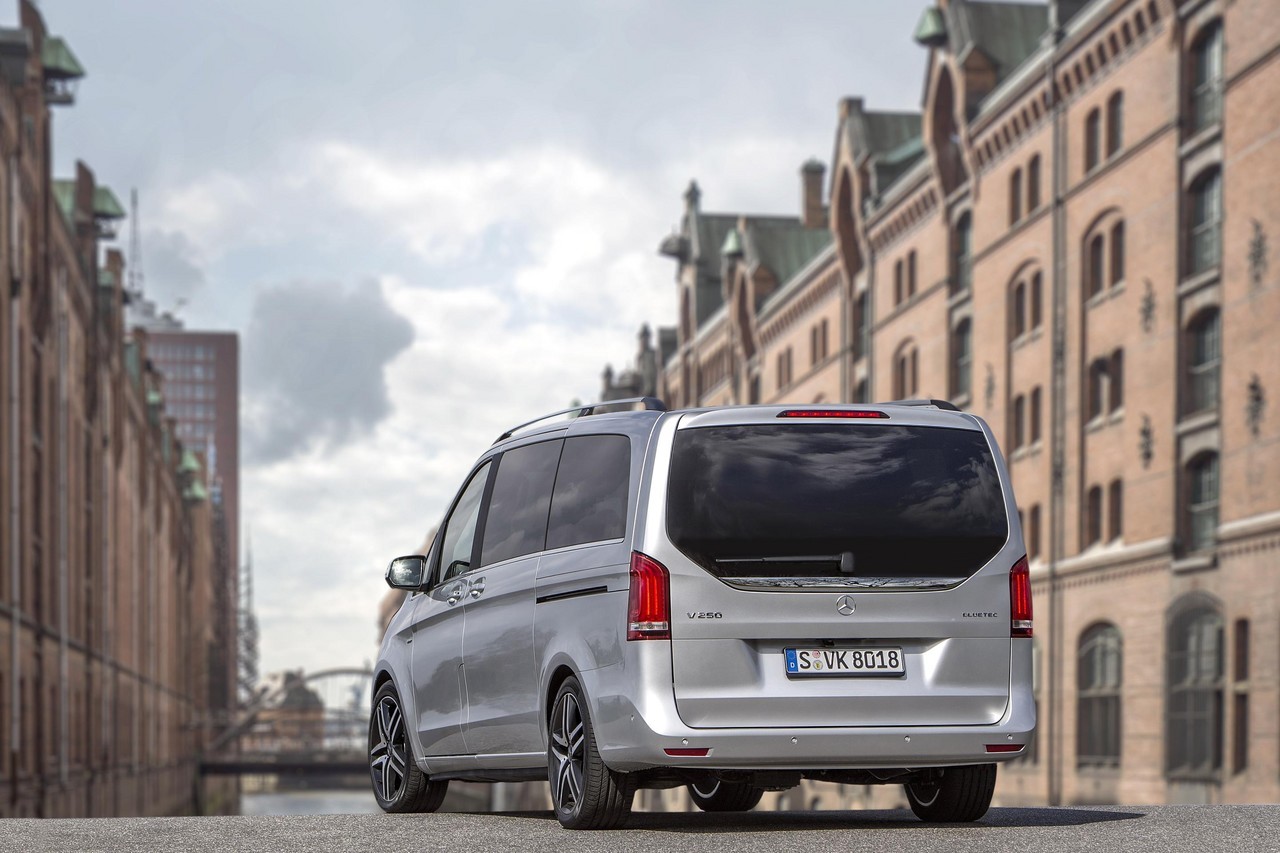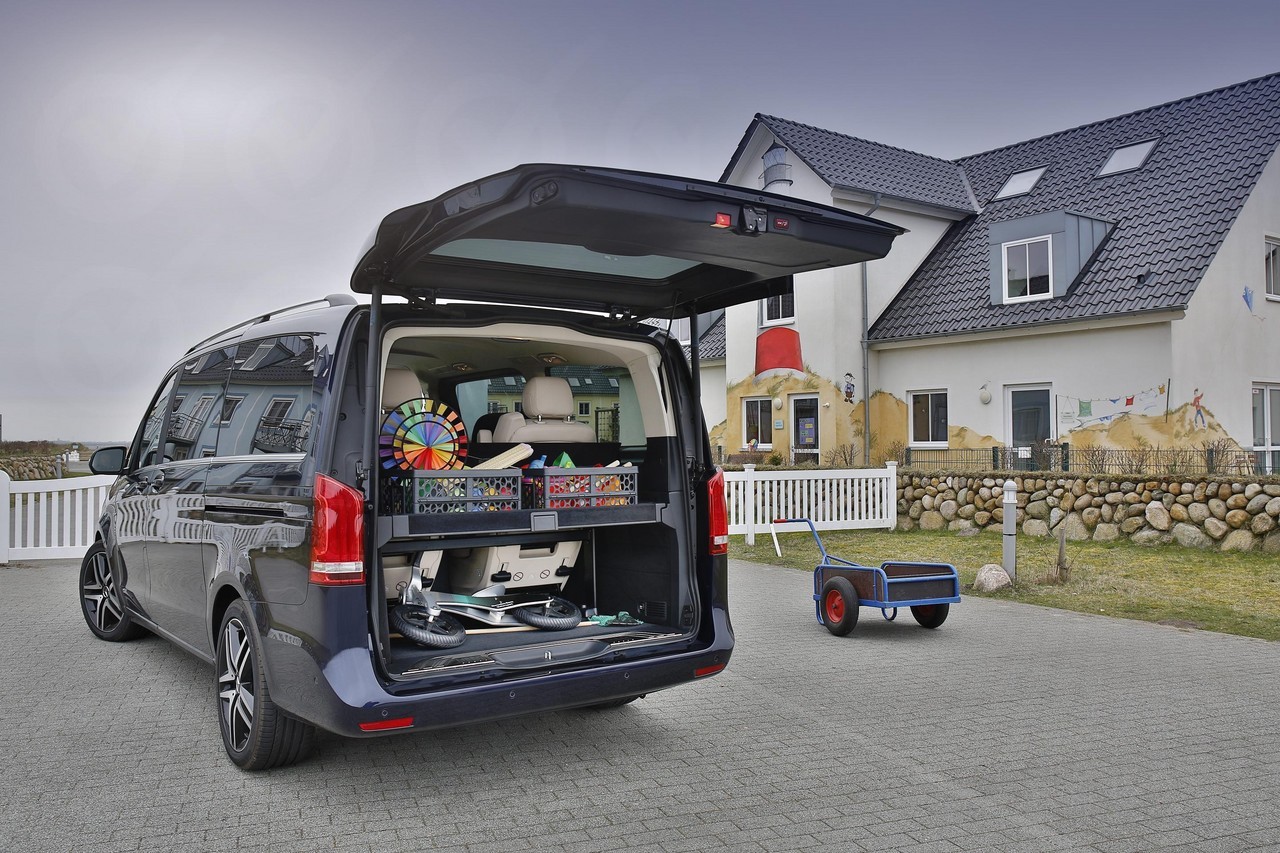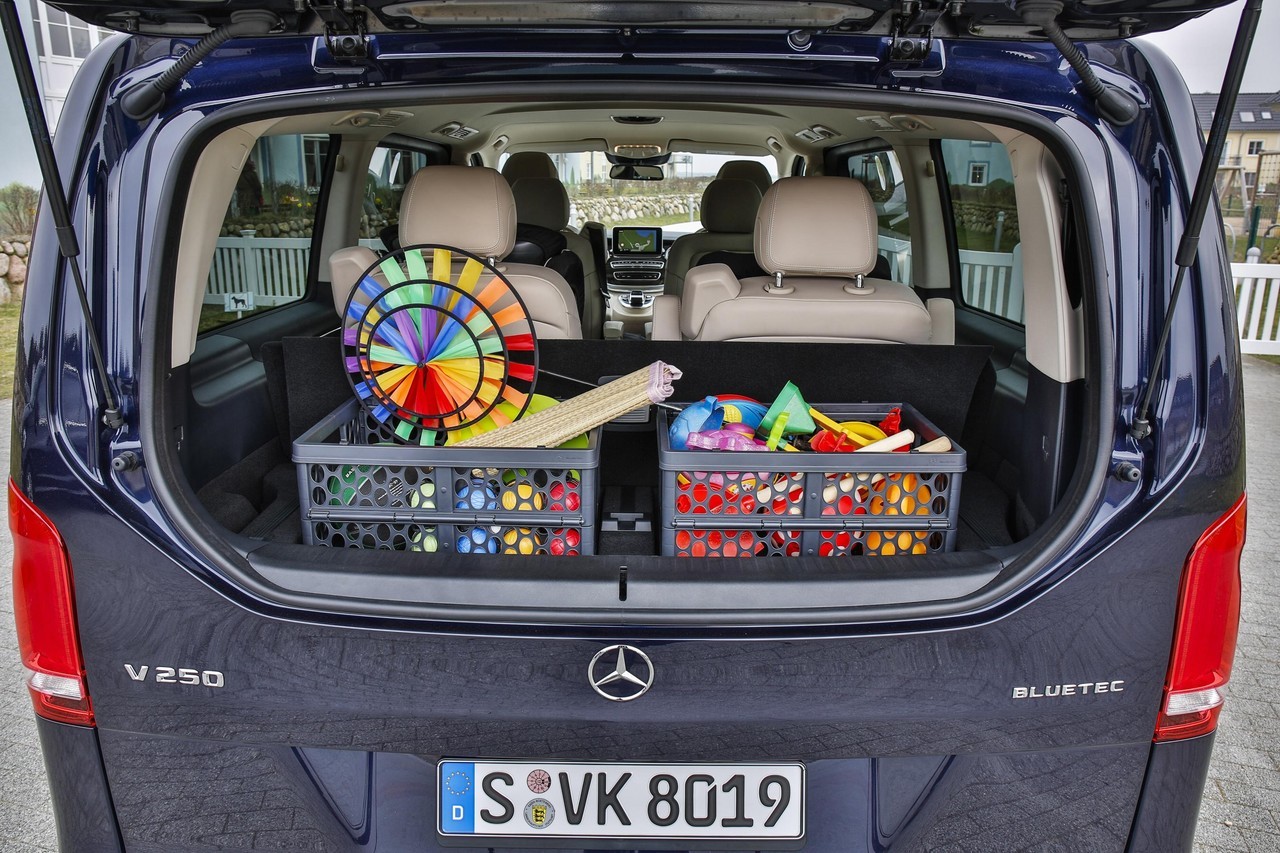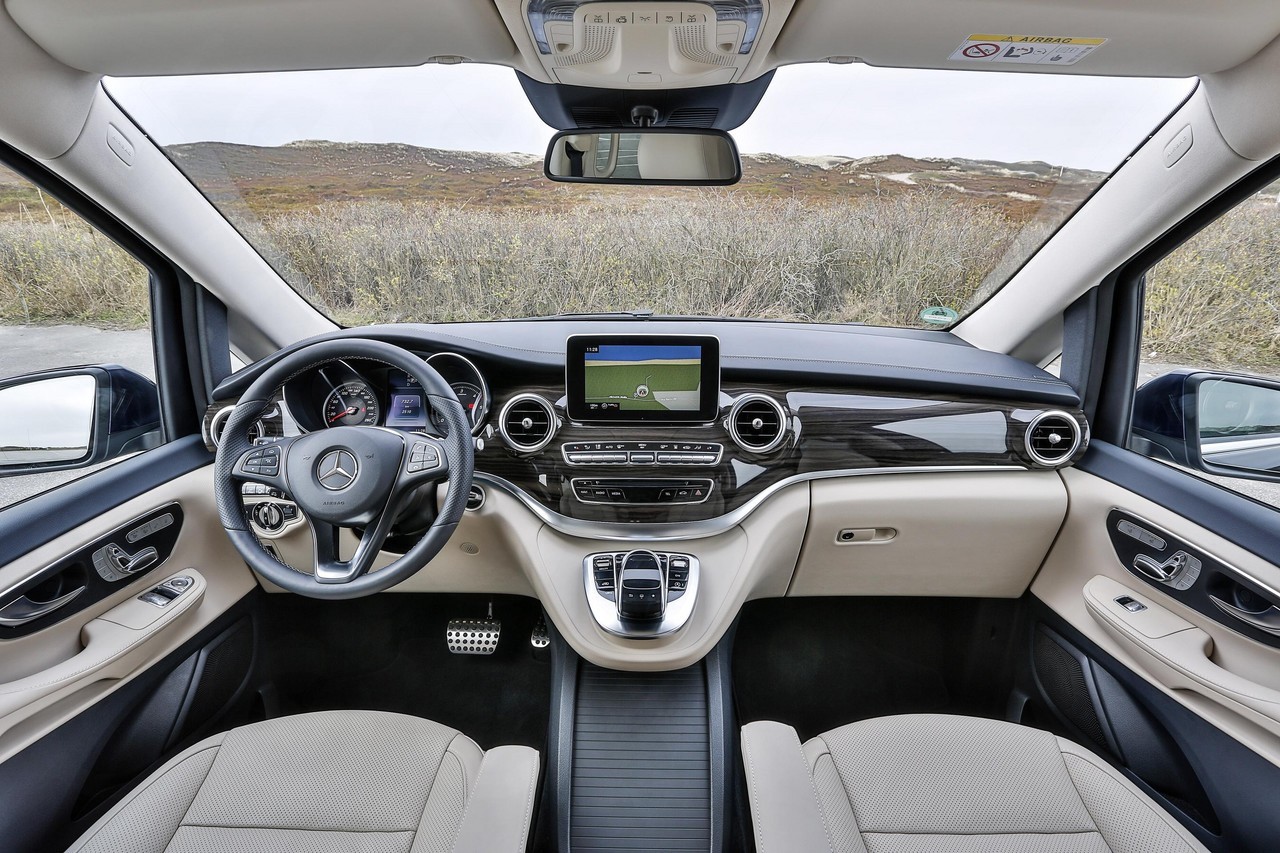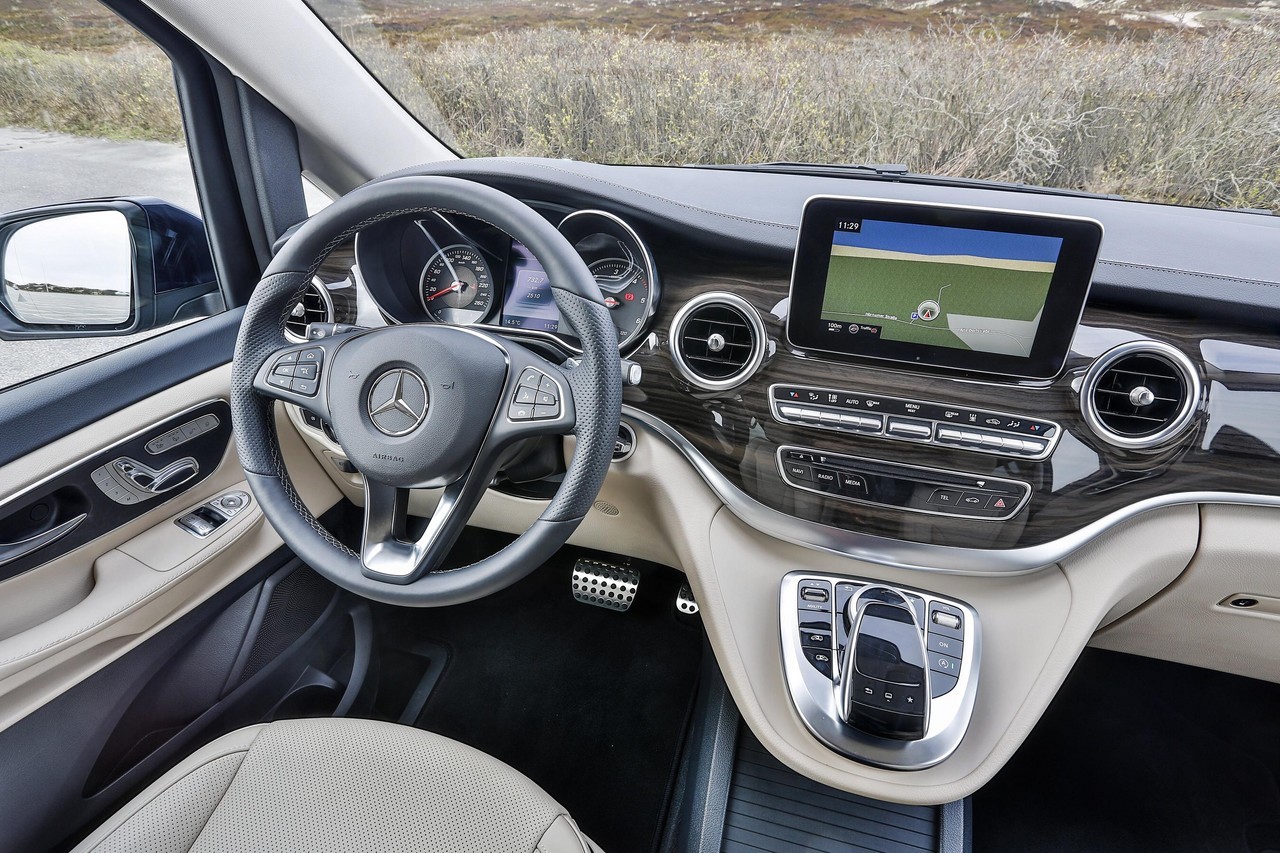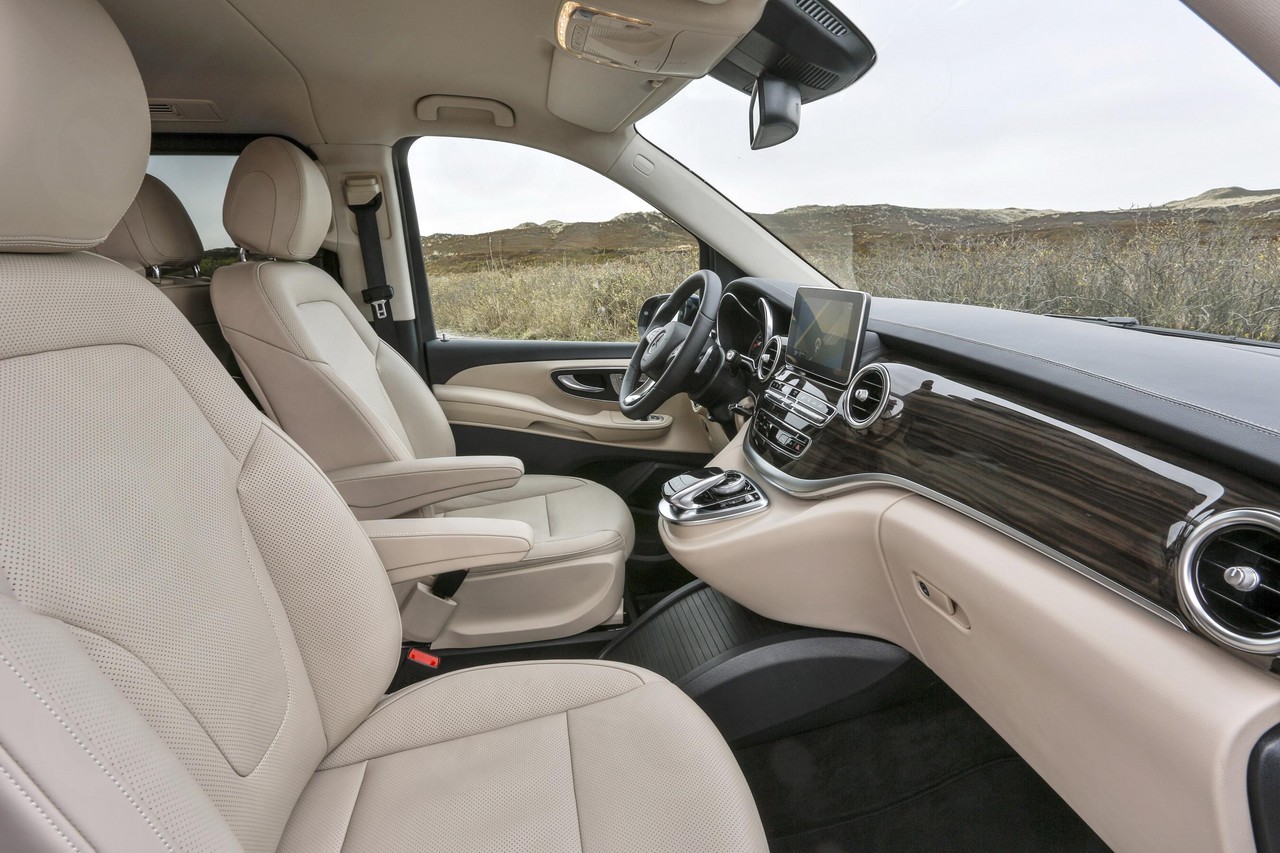
- Fuel-efficient turbo-diesel engine
- Spacious and flexible interior
- Sliding doors provide easy entry and exit
- Suspension lacks compliance when unladen
- Interior lacks sound insulation
- Rear seats don’t fold awway
- Slow steering
Overview
Available for order from May 2015, the Mercedes-Benz W447 V-Class was a people mover with seats for up to eight people. Manufactured in Vitoria-Gasteiz, Spain, the Mercedes-Benz W447 V-Class range initially consisted of the rear-wheel drive V 250 BlueTec Avantgarde which was powered by a 2.1-litre turbo-diesel engine that was mated to a seven-speed automatic transmission.
In May 2017, however, the V-Class range was expanded with the V 220 model.
OM651 turbo-diesel engine
The Mercedes-Benz W447 V 250 BlueTec was powered by Mercedes-Benz’s 2143 cc OM651 turbo-diesel engine . The OM651 engine had a cast iron block, an alloy cylinder head, common-rail injection with Delphi piezo injectors, a forged crankshaft and connecting rods, aluminium pistons, double overhead camshafts (driven via combination of toothed cogs and a short simplex chain), four valves per cylinder actuated via roller rocker arms, an intercooler and a compression ratio of 16.2:1. For the V 250 BlueTec, the OM651 diesel engine had a small high-pressure turbocharger and a large low-pressure turbocharger. The Borg Warner turbochargers were connected in series and each had a turbine which drove a compressor.
While peak outputs for the V 250’s OM651 turbo-diesel engine were quoted as 140 kW at 3800 rpm and 440 Nm at 1400-2400 rpm, the engine had an ‘overtorque’ capability in acceleration phases that could provide an additional 10 kW and 40 Nm.
The OM651 diesel engine had an ‘ECO start/stop function’ which enabled it to shut down when the vehicle was stationary in traffic. Over the combined EUDC test cycle, fuel consumption was 6.3 litres per 100 km.
| Years | Engine | Trans. | Peak power | Peak torque | |
|---|---|---|---|---|---|
| V 220 BlueTec | 2017-on | 2.1-litre turbo-diesel I4 | 7sp auto | 120 kW at 3800 rpm | 380 Nm at 1400-2400 rpm |
| V 250 BlueTec Avantgarde | 2015-on | 2.1-litre turbo-diesel I4 | 7sp auto | 140 kW at 3800 rpm | 440 Nm at 1400-2400 rpm |
Dimensions and body
The Mercedes-Benz W447 V-Class was 4895 mm long, 1928 mm wide, 1880 mm tall and had a 3200 mm long wheelbase; the body had a drag coefficient of 0.31 Cd. Furthermore, the W447 V 250 BlueTec had a kerb weight was 2145 kg and braked towing capacity of 2000 kg.
While the Mercedes-Benz W447 V-Clas had eight seats, seats were removable and the second row seats could be configured to face rearwards. The V-Class had power-operated sliding doors and a power-operated tailgate (‘Easy Pack’) in which the window section could be opened separately (i.e. a split tailgate). With the rear seats in position, cargo capacity was 1030 litres (VDA method).
Suspension
The Mercedes-Benz W447 V-Class had MacPherson strut front suspension with a stabiliser bar, coil springs and shock absorbers. At the rear, the V-Class had semi-trailing arm suspension with coil springs, a stabiliser bar and shock absorbers.
The Mercedes-Benz W447 V-Class was fitted with Mercedes-Benz’s ‘Agility Control’ suspension. A frequency-selective damping system, ‘Agility Control’ utilised:
- A bypass channel in the shock absorber’s piston pin; and,
- A control piston moving within a separate oil chamber.
When linear travel of the shock absorber was low, the control piston forced oil through the bypass channel to produce a smaller damping force at the damper valve. For greater shock absorber movements, the control piston moved to close the bypass channel so full damping force was available. To be clear, Agility Control used hydromechanics, not electronics to vary suspension behaviour.
Steering
The Mercedes-Benz W447 V-Class had speed-sensitive, electromechanical rack-and-pinion power steering. Furthermore, the V-Class had a turning circle of 11.8 metres.
Safety equipment
Standard safety equipment for the Mercedes-Benz W447 V-Class included dual front airbags, front seat-mounted side airbags, full-length curtain airbags, ABS, electronic brake force distribution, brake assist, electronic stability control, traction control and front seatbelt pre-tensioners.
As standard, the V 250 BlueTec Avantgarde was also fitted with:
- Mercedes-Benz’s Pre-Safe: activated by emergency braking, panic braking, pronounced over- or under-steering, critical steering movements or heavy support by the adaptive Brake Assist system, Pre-Safe would prepare the vehicle for a collision by deploying the seatbelt tensioners, closing the side windows and sunroof (where fitted) and adjusting the front passenger seat for an optimum deployment of the restraint system;
- Distronic Plus (adaptive cruise control with brake warning): an ‘adaptive’ cruise control system which used two short-range radar sensors positioned behind the front bumper to monitor the road up to 30 metres ahead, and a long-range radar located behind the radiator grille which had a range of 200 metres. Distronic Plus could apply the brakes automatically in stop-start traffic and bring the vehicle to rest, with deceleration up to 4 m/s2. Where traffic allowed, the vehicle would then accelerate up to its pre-set speed. If deceleration greater than 4 m/s2was required to avoid a collision, a warning tone would sound and a warning symbol would appear in the instrument cluster;
- Blind spot assist (passive): used two radar sensors in the rear of the vehicle to warn the driver before an indicated lane-change if a vehicle is in the driver’s blind spot;
- Lane keeping assist (passive): used a camera behind the windscreen to monitor lane markings and detect if the vehicle was drifting outside its lane. If so, acoustic and visual warnings would be issued; and,
- Crosswind Assist: could detect sudden, strong gusts of wind and prevent the vehicle from drifting out of its lane via corrective braking forces on one side of the vehicle; and,
Attention Assist: operated at speeds in excess of 80 km/h and assessed driver behaviour and steering movements for signs of drowsiness; if detected, the driver would be provided with visual and audible warnings.
Euro NCAP crash testing
In Euro NCAP crash testing , the Mercedes-Benz W447 V-Class received a five star safety rating which included a 93 per cent adult occupant protection rating and an 87 per cent child occupant protection rating. In the frontal offset test, occupant protection was generally rated as good, though chest protection for the driver was rated as adequate (i.e. a slight risk of serious injury). While occupant protection was rated as good in the side impact test, protection of the driver’s chest and abdomen were rated as marginal and adequate, respectively, in the more severe pole test.
Features: Mercedes-Benz W447 V 250 BlueTec Avantgarde
As standard, the Mercedes-Benz V 250 BlueTec Avantgarde was equipped with the ‘COMAND Online’ media system which had a 21.3 cm diagonal display, satellite navigation with 3D maps, an integrated WLAN hotspot, ‘Linguatronic’ voice control, Bluetooth mobile phone connectivity and audio streaming, a CD/DVD player, two USB inputs, an SDHC memory card slot and a 10 GB Media Register for audio storage.
Other standard features for the Mercedes-Benz V 250 BlueTec Avantgarde included 18-inch five twin-spoke alloy wheels, a 640 watt Burmester sound system which had fifteen speakers and a bass reflex box, ‘Lugano’ leather upholstery, power adjustable and heated front seats, ‘Thermotronic’ automatic climate control, semi-automatic rear air conditioning, cruise control with variable speed limiter, LED headlights with adaptive high beam assist, LED indicators and daytime running lights, dusk-sensing headlights, rain-sensing wipers, a reversing camera, a nappa leather steering wheel, remote central locking, power adjustable and heated mirrors with folding function, a power adjustable steering column, auto-dimming interior and door mirrors, an electric parking brake, three 12 volt power sockets, ambient interior lighting, stainless steel door sills, velour floor mats, illuminated vanity mirrors, anodised roof rails, rear privacy glass, a tyre pressure monitoring system and an immobiliser.
The Mercedes-Benz V 250 BlueTec Avantgarde also featured Active Parking Assist which could detect parallel and right angle parking spaces while driving at speeds of up to 35 km/h. Once engaged, Active Parking Assist could provide automated steering for parking manoeuvres while the driver controlled vehicle speed.
Specifications
- Specifications: Mercedes-Benz W447 V-Class (May 2015)
- Specifications: Mercedes-Benz W447 V-Class (August 2016)
- Specifications: Mercedes-Benz W447 V-Class (May 2017)
Related links
- Mercedes-Benz Australia: V-Class
- Daimler Media: Mercedes-Benz V-Class Press Kit
- Wikipedia.org: Mercedes-Benz W447 V-Class
